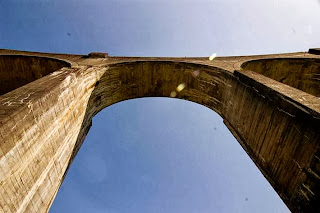The giant sculpture is towering
30 meters (approximately 100 feet) above the ground, The Kelpies consists of a
pair of mammoth horse head sculptures installed by artist Andy Scott in
Falkirk, Scotland. The Scottish artist almost spent a total of 9 years
designing and then assembling the sculptures on-site, crafting steel parts into
intricate busts that allude to the legendary Scottish water spirit that takes
the form of a horse.
The Kelpies project was undergoing
construction from long time in The Helix Park, but as these spectacular images
taken by photographer dswain display us, the canal site has been transformed entirely
to complement the dynamic grace of the sculptures since the installation was
opened to the public in April 2014. Moreover; the colorful lights around and
inside the steel works illuminate their superlative shapes in the darkness, additionally
increasing the beauty of the Scottish landscape.
For artists, the project's
location finally decided to in his father's hometown of Falkirk, the cultural
tale of kelpies, and Scotland's industrial past compelled him to take on the
project as a source of national pride. The Scott determined to build around a
contemporary sculptural monument. Water-borne, towering gateways into The
Helix, the Forth & Clyde canal and Scotland, translating the legacy of the
area into honored equine guardians he say; I see The Kelpies as a
personification of local and national equine history, of the lost industries of
Scotland. I also visualize them as a symbol of modern Scotland full of pride
and royal, of the people and the land. They’re the culmination of cutting edge
technology and hand crafted artisanship, formed by our country's leading authorities
through international partnerships."




























































